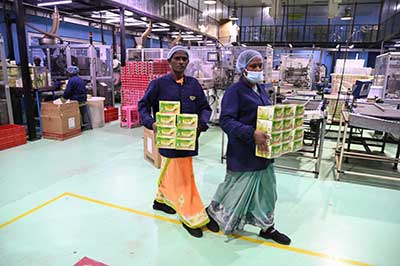Date: 16/01/2023
Relevance: GS-2: Welfare Schemes for Vulnerable Sections of the population by the Centre and States and the Performance of these Schemes;
Key Phrases: Gender Gap, Labour force participation. Reverse migration, Global Gender Gap Index 2022, Kerala Migration Survey, Gender-responsive innovation.
Why in News?
- A recent World Bank report shows that the gender gap in labour force participation has been narrowing globally, including in India. However, this is primarily due to falling labour force participation among males.
Key Highlights:
- The gender gap in favour of men is at 25 per cent globally, 38 per cent for lower-middle-income countries and 51 per cent for India.
- As per the OECD, women’s labour force participation leads to higher ownership and control of financial assets which in turn accelerates development by reducing poverty and inequalities.
- Educational attainment usually acts as a signal for productivity.
- Accordingly, if men and women are equally qualified or educated, they must enjoy equal employment opportunities and thus participate in the labour market equally, thereby reducing the gender gap.
Do you know?
- Gender gap in labour force participation is the difference between the percentage of working-age women participating in the labour force with that of men.
- India ranks 135 among 146 countries in the Global Gender Gap Index 2022 of the World Economic Forum (WEF).
- The rank in economic participation and opportunity was particularly abysmal with India at 143rd position. This poor performance is largely due to the very low participation of Indian women in the workforce.
- India’s condition is much worse than most developing countries in the world.
What is the Status of Women Workforce Participation in India?
- Low Female labour force participation Rate:
- Nearly two-thirds of Indian women with college degrees are without jobs, pushing female labour force participation to 27 per cent in 2011-2012 which is among the lowest in the world – from near 40 per cent in the early-2000s, according to World Bank data.
- More women are earning degrees in science and technology. But the unemployment rate for graduate Indian women is far higher than in other developing nations in Asia such as Bangladesh and Indonesia.
- Lack of suitable jobs:
- More Indian women have indicated that they would like to work, but cannot find suitable jobs that are safe, and flexible, with access to benefits and dignity in the workplace.
Why Is There A Persistent Gap In Favour Of Men Despite Men And Women Being Equally Educated?
- Female education not materializing into labour force participation:
- Using data from two rounds of the Kerala Migration Survey - 2013 and 2018, it is found that female education does not materialise into labour force participation.
- In fact, the more educated women are, the less likely they are to participate in the labour force.
- Preassigned gender roles assigned to women:
- This points towards the gender roles that society confers on women and binds them to the household.
- These preassigned gender roles partly explain a low labour force participation among females compared to males.
Reasons For The Low Level Of Work Participation Among Women With High Levels Of Education:
- The fear of male backlash against women’s financial independence.
- Cultural and religious factors also play a role in the low level of work participation among women. For instance, Muslim women in Kerala have the lowest labour force participation among women of all religious faiths.
- The tightening of the labour market in the Gulf countries has led to a reverse migration, the majority of whom are Muslim men. Despite this economic crisis, the negative effect on female labour force participation in the Malabar region has persisted.
What needs to be done?
- Improve Representation:
- An exception has to be made to get the Women’s Reservation Bill 2008 passed in Parliament.
- Even as this is pending, political parties should start nominating women for one-third of the seats.
- Gender-responsive innovation:
- Renewed thrust on innovation that focuses on a gender-responsive approach to the innovation process, promotion of innovations by women, support for innovations for the underprivileged, and so on.
- PPP partnerships:
- Encourage public-private partnerships in this area and also recognize businesses that contribute to the national gender parity goals.
- Embrace healthy public-private partnerships to support women in business and bring tech to aid innovative processes, solutions, and products to enhance their economic participation.
- Implement the numerous schemes announced in true spirit:
- Government can start with spending the allocated budgets fully and hold district collectors accountable with metrics similar to Aspiring Districts initiative. (The Nirbhaya fund was seriously under-utilized.)
- It is time to upgrade “Beti-Bachao-Beti-Padhao” to “Beti-Padhao-Beti-Kamao”.
- Start-up India must develop schemes to build an ecosystem for women entrepreneurs to thrive.
- Independent authority for gender parity:
- Create an independent authority like the UIDAI for gender parity that can be the nodal agency for scaling up at district levels with clear objectives, metrics, targets and good governance.
- It can address a multitude of areas like education, skilling, safety, transparency in informal sector labour participation, wage parity, and women’s business opportunities.
Conclusion:
- To bridge the gender gap, economic crises cannot be relied upon to change deeply entrenched societal norms.
- To boost female work participation, the state’s role is also limited in bringing enabling regulations.
- Deep-rooted reforms at the societal level in redefining the age-old gender roles are the only way to curb the persistent gender gap in the labour market.
Source: Hindu BL
Mains Question:
Q. There is a persistent labour force participation gap in favour of men despite men and women being equally educated. Examine. (150 words)






















